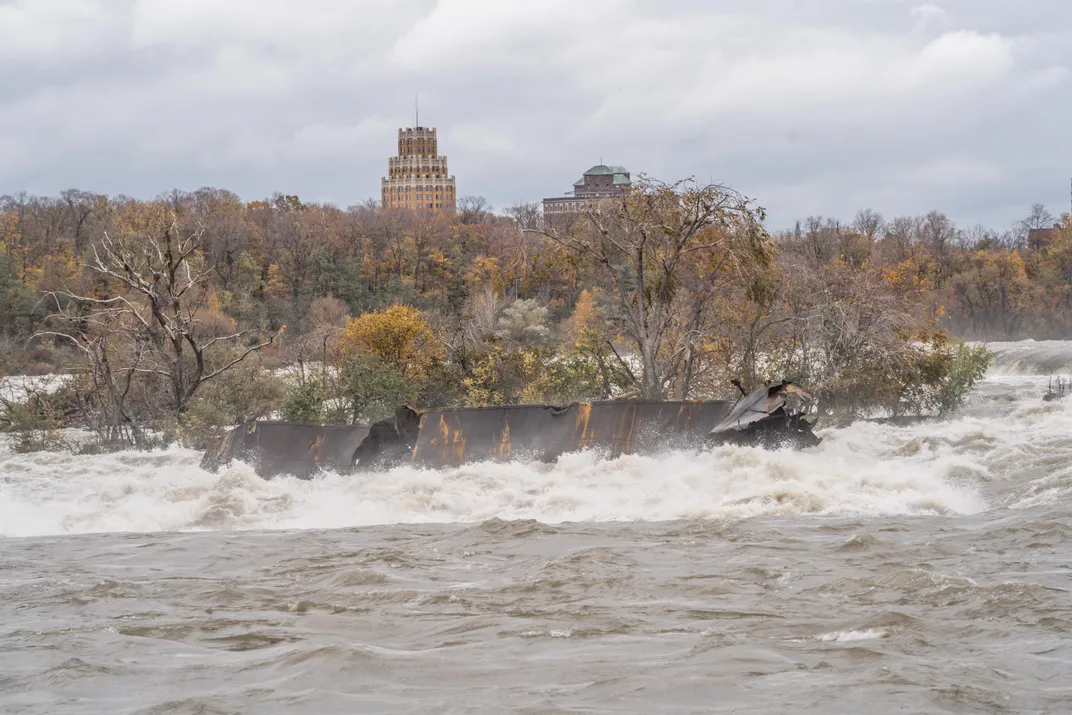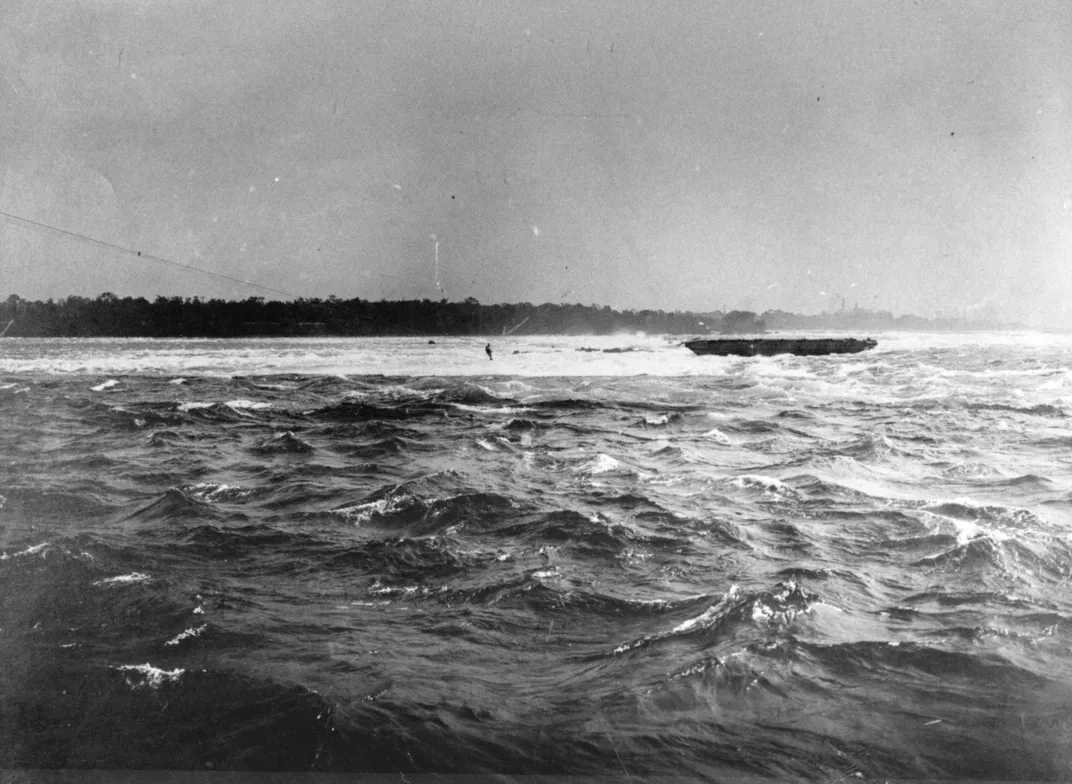A Historic Boat, Stuck Above Niagara Falls Since 1918, Finally Breaks Free
But the vessel’s joyride didn’t last long; it is now lodged in a new location some 160 feet downriver
/https://tf-cmsv2-smithsonianmag-media.s3.amazonaws.com/filer/22/a9/22a91b53-a584-4ad3-8f1a-500b6bc6b23a/iron_scow_-_november_4_-_2019_1.jpg)
In 1918, a barge-like vessel broke free from its tugboat and got lodged in the shallow rapids above Niagara Falls. The two men on board were rescued, but the boat remained stuck in the same spot for more than a century. Until this Halloween, when gusty winds and strong rains pushed the wreck further downriver.
The iron scow, as the vessel is known, has been eaten away by rust over the years, which may explain why it finally shifted. “It could have been the way the wind came down the river,” David Adames, CEO of Niagara Parks, which sits on the Canadian side of Niagara River, tells Christine Rankin of CBC News. “If it came down at a high enough gust, at that point in time, it might have hit the side of the rusted structure and it was enough to move it.”
But the scow did not stay free for long. It has now come to a stop around 164 feet downstream, Niagara Parks explained in a video, and appears to have flipped on its side and spun around. “It could be stuck there for days,” says Jim Hill, the parks’ senior manager of heritage, “or it could be stuck there for years.”
The severe weather conditions experienced yesterday have caused the iron scow, which has remained lodged in the powerful upper rapids above the Falls for over a century, to shift significantly from its position.
— Niagara Parks (@NiagaraParks) November 1, 2019
History of the Iron Scow Rescue: https://t.co/9Pehx8dabS pic.twitter.com/AG4nfLrzXx
The scow is a unique relic of what Niagara Parks deems “[o]ne of the most dramatic rescue efforts in the history of the Niagara River.” On August 6, 1918, the scow was taking part in a dredging operation around a mile away from Horseshoe Falls, as the Canadian section of the natural landmark is known. Suddenly, the boat separated from its tug and began heading towards the falls. Two quick-thinking men on board, Gustav Lofberg and James Harris, opened the scow’s bottom dumping doors, which flooded its compartments and slowed it down. Eventually, the boat ground to a halt on a rocky area less than 2,000 feet from the edge of the falls.
But the ordeal was far from over. Lofberg and Harris were now stranded amid the “torturous rapids,” as Niagara Parks puts it, and authorities from both the United States and Canada began implementing a plan to bring them to safety. The U.S. Coast Guard shot a lifeline from a nearby powerhouse to the scow, and a canvas sling was suspended from the ropes. By nightfall, authorities were inching the sling closer to the men—when it suddenly stopped, caught up in a tangle in the lines.
In the early hours of the morning, a brave WWI veteran named William “Red” Hill Sr. volunteered to to travel over the rapids in the sling and untangle the ropes. It took him two tries—it was too dark to see properly during the first attempt, according to Kayla Epstein of the Washington Post—but he was ultimately successful. Later that morning, Lofberg and Harris were safely brought to shore.
Niagara Parks staff are now monitoring the scow, and Adames tells Laura Stone of the Globe and Mail that officials may add cameras to a decommissioned power plant so they can keep a closer watch on it. “[W]ith the river current and more wind, it could move again and it could go to the Falls,” Adames says—and if that happens, authorities will have to be notified so they can properly protect tourists. A tumble down the Falls is also likely to spell the end of the scow’s decades-long stint in Niagara; either the boat will get stuck in rock formations below the water, or it will drift downriver, where it will have to be removed due to safety concerns.
But for now, Adames, tells Stone, it’s looking like the vessel will stay in its new location for the “foreseeable future,” lodged once again amid Niagara’s swirling waters.

